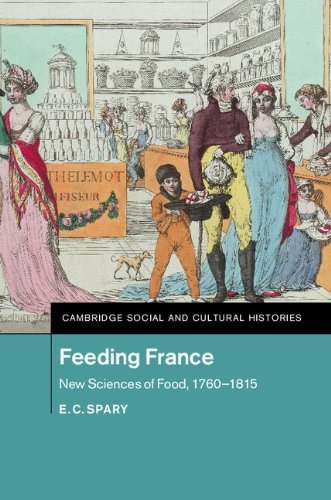


Books in series

The Character of Credit
Personal Debt in English Culture, 1740–1914
2003

Reading Sex in the Eighteenth Century
Bodies and Gender in English Erotic Culture
2005

The Politics of Commonwealth
Citizens and Freemen in Early Modern England
2005

Gentility and the Comic Theatre of Late Stuart London
2005

Death, Grief and Poverty in Britain, 1870–1914
2005

Nature and the Godly Empire
Science and Evangelical Mission in the Pacific, 1795–1850
2005

Suicide and the Body Politic in Imperial Russia
2006

Master and Servant
Love and Labour in the English Industrial Age
2003

Commemorating the Dead in Revolutionary France
Revolution and Remembrance, 1789–1799
2007

The Culture of Giving
Informal Support and Gift-Exchange in Early Modern England
2008

Lost Londons
Change, Crime, and Control in the Capital City, 1550-1660
2008

Sex Before the Sexual Revolution
Intimate Life in England 1918-1963
2010

Voices of the People in Nineteenth-Century France
2012

Cities and the Grand Tour
The British in Italy, c.1690–1820
2012

Italy's Margins
Social Exclusion and Nation Formation since 1861
2014

Feeding France
New Sciences of Food, 1760–1815
2014

Radio and the Politics of Sound in Interwar France, 1921–1939
2016

The Channel
England, France and the Construction of a Maritime Border in the Eighteenth Century
2016

Renaissance Ethnography and the Invention of the Human
New Worlds, Maps and Monsters
2016
Authors


Carolyn Kay Steedman, FBA (born 20 March 1947) is a British historian, specialising in the social and cultural history of modern Britain and exploring labour, gender, class, language and childhood. Since 2013, she has been Emeritus Professor of History at University of Warwick, where she had previously been a Professor of History since 1999. Steedman graduated from the University of Sussex with an undergraduate degree in English and American Studies in 1968, and then completed a master's degree at Newnham College, Cambridge, in 1974. She was a teacher from then until 1982, when she joined the Institute of Education in the University of London as a researcher; for the 1983–84 year, she was a Fellow there, before lecturing at the University of Warwick, where she was appointed Senior Lecturer in 1988, Reader in 1991 and Professor of Social History in 1995. For the year 1998–99, she was Director of Warwick's Centre for Study of Social History. Steedman returned to Newnham College to complete her doctorate, which was awarded in 1989. In 2011, Steedman was elected a Fellow of the British Academy (FBA), the United Kingdom's national academy for the humanities and social sciences.
Simon Szreter is Professor of History and Public Policy at St John's College, Cambridge, England. Research Interests History and Public Policy, especially in relation to comparative demographic, social and economic change. Current research includes the study of qualitative and quantitative sources on the history of fertility decline in Britain, including a new project on the venereal diseases and fertility decline; the history of mortality public health and politics; and the comparative history of identity registration systems in world history. I am a long-term honorary research associate of the Cambridge Group for the History of Population and Social Structure; and currently with several colleagues in the Dept of History and Philosophy of Science, Classics and Physiology, I am an award-holder of the 5-year Wellcome Strategic Award, 2009-14, to the University of Cambridge on the Theme of 'Generation to Reproduction', which has a number of funded doctoral scholarships attached to it.